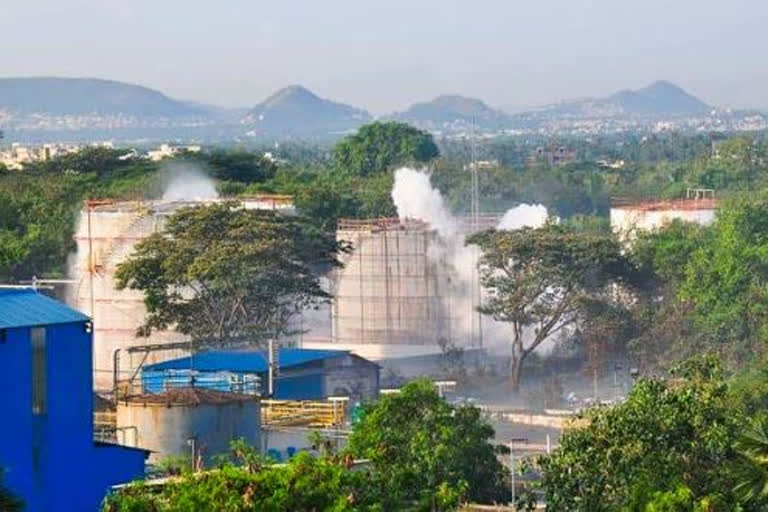New Delhi: With several industrial accidents in recent past highlighting gaps, the government is in the last leg of finalising the amendment to chemical accident rules to minimise disasters such as the one that happened at Visakhapatnam polymer factory on Thursday, killing at least 11 and hospitalising hundreds.
Following the 1984 Bhopal gas disaster, the Ministry of Environment and Forest (MoEF) notified two sets of rules - Manufacture, Storage and Import of Hazardous Chemicals (MSIHC) Rules, 1989 and Chemical Accidents (Emergency Planning, Preparedness, and Response), (CAEPPR) Rules, 1996 - to regulate the manufacturing, use, and handling of hazardous chemicals.
The objective of MSIHC Rules is to prevent major chemical accidents arising from industrial activities and limit the effects of chemical (industrial) accidents. The CAEPPR Rules provide the statutory back-up for Crisis Management.
In 2016, MoEF proposed to upgrade the rules to keep pace with the time. A draft amendment to rules that sought effective enforcement of regulations in the chemical industry, was floated for stakeholder consultation.
But the rules could not be finalised, officials with direct knowledge of the development said.
The amendment was referred to a committee that took a "lot of time" in finalising its recommendations, an official said.
Read more:Vizag gas leak: Focus on Public Liability Insurance restored
In the meanwhile, the Department of Chemicals and Petrochemicals (DCPC) wanted some kind of power to regulate the usage of all chemicals incorporating best practices around the globe.
DCPC was keen on pre-use registration and inventory management, they said adding it is a kind of licensing.
MoEF, on the other hand, continued to be a nodal authority on thehandling of hazardous chemicals.
The difference was resolved by allowing DCPC to frame regulations for chemicals, and hazardous chemicals would be one sub-set for which MoEF will assist in framing regulations.
A draft Cabinet note has been circulated and regulation would be in place after inter-ministerial discussion, they said.
"The rules should be out in a short time," an official said.
The main objectives of the MSIHC Rules are to prevent major chemical accidents arising from industrial activities and limit the effects of chemical (industrial) accidents.
Similarly, the CAEPPR Rules, 1996 provide the statutory backup for crisis management set-up and prescribe criteria for identification of Major Accident Hazard (MAH) installations.
All districts with such installations are required to establish crisis management groups, it said.
In addition, as prescribed by the MSIHC Rules, 1989, the occupiers of the MAH units are responsible for the preparation of on-site Emergency Plans while the Chief Inspector of Factories (CIFs) in consultation with district authorities are required to prepare off-site emergency plans as well.
India witnessed its worst industrial accident due to an accidental leakage of nearly 42 tonnes of toxic gas, Methyl Iso Cyanate (MIC), in the intervening night of December 2-3, 1984 in Bhopal.
Centre asks chemical firms to exercise caution when reopening plants
Union Chemicals and Fertilisers Minister D V Sadananda Gowda has urged all public and private chemical makers to exercise caution and care while reopening their plants.
Union Environment Ministry and State Pollution Control Boards have also issued separate directives to all companies to take extreme precaution while restarting their units that remained suspended due to the lockdown imposed to contain the spread of COVID-19 in the country, he said.
"LG Polymers does not come under direct control of our ministry. However, we have asked all public and private chemicals manufacturers to exercise caution and care while reopening their plants," Gowda told PTI.
The minister said his officers are coordinating with the Andhra Pradesh government.
He further said LG Polymers, a multinational chemical company, had kept its unit ready for reopening after one and half month of lockdown. The unit started leaking at around 3.40 am on Thursday due to pressure.
At present, Indian chemicals market size is about USD 163 billion, which is only three per cent of the global chemical industry of USD 5 trillion, as per the official data.
(PTI Report)



